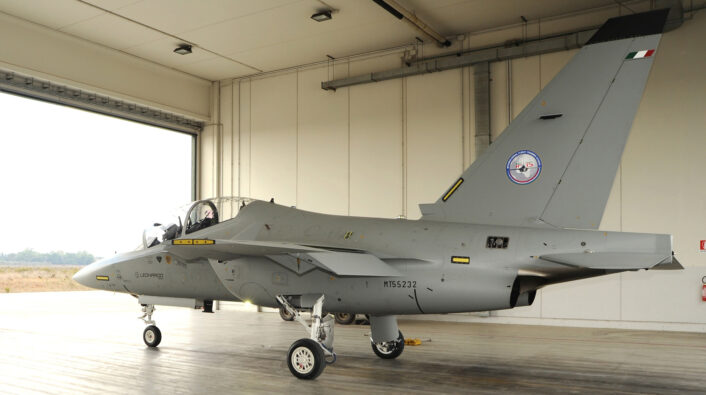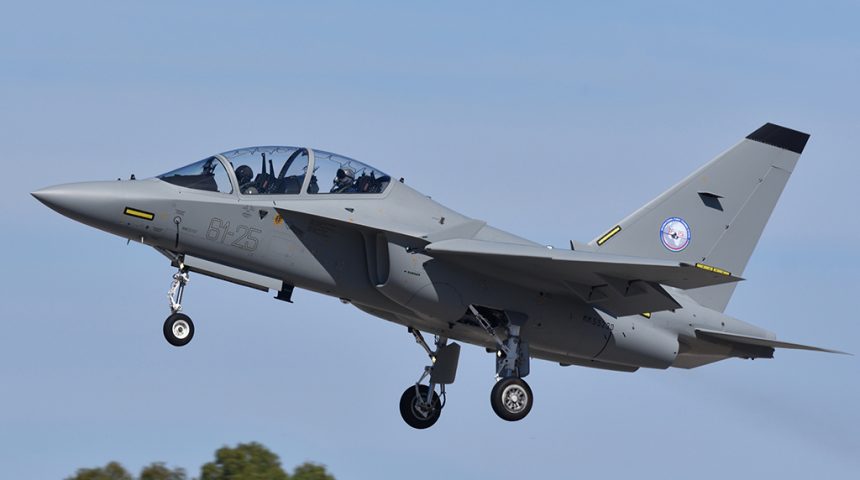Japan joins Qatar and Germany and elects to train JASDF (Japan Air Self-Defense Force) pilots at the Italian Air Force’s and Leonardo’s International Flight Training School (IFTS).
The new International Flight Training School (IFTS), a joint venture between the Italian Air Force and Leonardo, currently located at Lecce-Galatina Air Base, in southeastern Italy, but about to relocate to Decimomannu Air Base, Sardinia, continues to attract the interest of foreign air forces. After the two Qatar Emiri Air Force (QEAF) pilots, who have already reached the final stage of the LIFT (Lead In to Fighter Training) course, and the two German Air Force pilots, who have recently begun their advanced flight training (or Phase IV) at the Italian arbase, Japanese military pilots will also take part in the advanced training courses (Phase IV) at the International Flight Training School (IFTS), soon.
On Oct. 26, 2021, the (then) Chief of Staff of the Italian Air Force, General Alberto Rosso (just replaced in the role by Gen. Luca Goretti), and the Chief of Staff of the Japan Air Self-Defense Force (JASDF), General Shunji Izutsu, have signed, in “distance mode” (by means of a virtual meeting) a technical arrangement on the training of Japanese military pilots at the IFTS.
The IFTS initiative is an example of strategic partnership between the military and the industry, set to become an international benchmark for military pilots’ training. The goal is to meet the growing demand for training by partner nations who are not equipped with “domestic” solutions to prepare their pilots for their most advanced aircraft. In particular, JASDF is equipped with the F-35A Lightning II and needed an advanced training program to prepare its pilots to the 5th generation.
To that respect, an advanced trainer like the M-346 Master that equips the IFTS can play a crucial role. The Master is, if not the most, one of the most advanced jet trainers around, offering all those features required to prepare future combat pilots for +4th and 5th gen. fighters: a high thrust-to-weight ratio, supersonic speed at high altitude, and a maneuverability similar to those of the leading combat aircraft. It is equipped with a HUD (Head Up Display), HOTAS (Hands On Throttle And Stick), VCI (Vocal Control Inputs), and a Helmet Mounted Display system built around a lightweight HGU-55P helmet, with a night module that can to be fitted to the standard NVG eyepiece kit that works by overlaying the HMD symbology to that of the NVG imagery.
Moreover, IFTS combines the knowledge and tradition of the Italian Air Force with the expertise and leadership in training platforms of Leonardo to offer both Italian and foreign pilots, Phase IV or Lead-In to Fighter Training (LIFT) using 22 M-346 Master aircraft (18 belonging to the Italian Air Force and four by Leonardo) and its GBTS (Ground-Based Training System) as well as the advanced full-mission simulator jointly developed by Leonardo and CAE. Training at IFTS is delivered by a mixed team of active-duty Italian Air Force instructors from the 61° Stormo (Wing) – the Italian Air Force Flight School – and highly experienced international former military pilots.

Interestingly as part of the newly signed arrangement between Italy and Japan for the use of IFTS services, JASDF instructor pilots could join the school in the next years, to work side-by-side with the Italian IPs so as to improve the sharing of experiences and standardization of procedures among operators of the same types.
“Today is an important and historical date” said Gen. Alberto Rosso, before signing the document. “I am proud and honoured to be able to sign this agreement, which will outline for both countries the track for growing together, for sharing professional skills, allowing our staff to work in close contact, synergy and friendship. This is another important step in the collaboration between our Air Forces: we are already cooperating with great success in many areas, for example having common platforms such as the F-35 aircraft and the KC-767 tanker. […] The distance that separates us today is geographical only, but our countries are close, joined in harmony on many themes and historically connected. We remember, for example, the “Rome – Tokyo flight” of the pioneer Arturo Ferrarin, which we celebrated last week in his hometown of Thiene (North Italy): a historic undertaking and also a powerful symbol of the strong and lasting bond that joins our two countries.”
Chief of Staff of the Japan Air Self-Defense Force (JASDF), General Shunji Izutsu, commented: “Signing today the technical arrangement, I deeply appreciate your and your staff’s extensive support and cooperation. I believe that this is a significant step to deepen defense cooperation and exchanges between the Koku-Jieitai (Japan Air Self-Defense Force) and Italian Air Force. This is one of your great achievements. Let me extend my heartfelt respect to your achievements and gratitude to your contribution to Japan-Italy relationship.”









